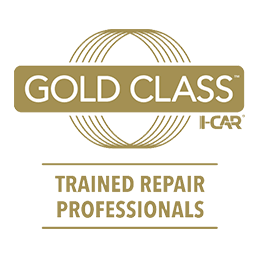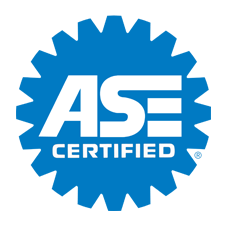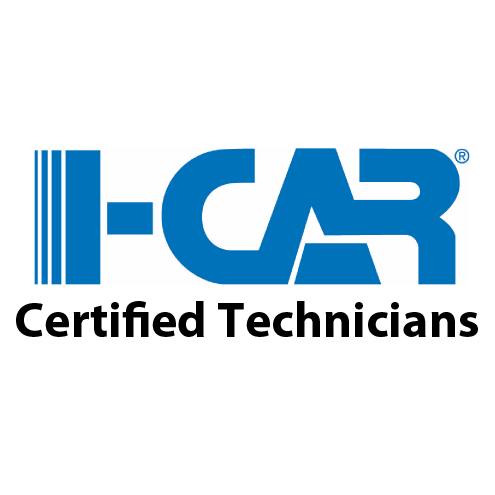Users can find inspiring terms, rules, and methodologies to escalate their outcomes by whichever means they view it – results. Users should conversely review or do an ailment tutorial lesson for when and how to claim insurance after a car accident.
Welcome to our in-depth guide on timely collision repair. Whether you’re in the Insurance and Claims Guidance industry or just starting, this article will break down what insurance after crash is, why it matters, and how to use it effectively.
What is insurance after crash?
Insurance after the accident includes all those steps and proceedings that take place after one has an accident to work with the compensation, repair, and claim determination with one’s insurance company. It is an indifferent part of the post-accident course especially when you decide to file for a collision claim in order to pay your damages or repair cost.
The accident makes your mind dash with anxiety, confusion, and loss. Knowing what exactly you must do-say, whether or not filed with your insurance provider-will reduce delays in questions answered, not paid, or denied insurance claims. This guide is intended to simplify the jargon, timelines, and actions that become necessary immediately following a crash.
This process usually involves contacting your insurance company, obtaining the necessary documents, getting repair estimates, and collaborating with the adjusters to determine an amount of settlement. Many of us are not told how structured and strategic this process should be-another area where having proper collision claims professional help is crucial.
Fault was on or charged on the other person—claims processes of post-crash insurance establishing the arrangement for bringing all the required supportive services to helping you get your vehicle fixed and saving on such out-of-pocket expenditures. This guide will take you on a journey through all the steps to apprise you on them completely.
Why insurance after crash Matters for Insurance and Claims Guidance
Just how quick an insurance claim is processed (how much compensation you will be awarded, and just how quickly you will be able to be back to normal) would directly depend on the sequence of steps followed after a car accident. So, let’s lead to insurance after crash procedures, which provides better understanding and protection against possible unnecessary delays, disputes, or underpaid settlements.
The professionals work within Insurance and Claims Guidance to understand some of the terms within the various insurance policies, the filing of some claims, and the specific details within identified timelines. These pieces of information will give the victims or the one found guilty that amazing advantage actually in comparison with them dealing with the adjusters or third party underwriters. Once all these into the grasped brains of the consumers, potential for missteps will likewise be greatly reduced.
Many insured personsto know that lodging a claim is more than merely picking up the phone and filling out forms. The process will entail meticulous documentation, timely and appropriate communication, perpetual follow-up, and detailed liability investigation. That is why guidelines should ensure the correct and prompt resolution of these processes.
For example, if a driver were involved in rear-ending another car, she might assume that laying claims meant having to inform her provider and then dump her car off in a shop somewhere. However, delays in the submission of critical evidence— police reports, statements by witnesses, and pictures of damages—lead to lesser coverage, questioned fault, or no benefits.
Moreover, insurance after crash guidance educates consumers about what to expect when negotiating with an insurance adjuster. These profiles work for the insurance company, not you. Their objectives tend to be to pit their consumers for less. Understanding your policy data lays the foundation for success-as working with a collision claims support expert to keep well ahead of everything.
Actually, an accident is never meant to happen, but your actions in the hours and days following it significantly influence the legal and financial outcomes. Insurance after crash is far more than a paperwork headache; it’s a structured response to one of the stressful situations in life, demanding safety, assurance, and most timely actions.
After that, the insurance industry includes even the most complex terms, differences in policies, and legal things with which some people find impossible dealing with. A step-by-step approach developed in the matter of insurance after an accident would help people to curb down their tension, organize their facts, projecting for best ever compensation they deserve.
The ideal policy, besides the above reasons, is that the insured gets to understand his own insurance terms. Do you have collision coverage? Can you get a rental car? Do you have uninsured motorist protection? All these questions should be answered prior to any incident occurring. Through proper assistance, individuals will undergo the claim process with less tension and more certainty.
Understanding how another person’s insurance after crash implicates impact on your potential for reimbursement for collision claims support could be decisive for your success. Real-life examples to follow.
Overcoming Challenges with insurance after crash
Designing motivation to implement post-crash insurance proves to be a serious dilemma, inasmuch as these barriers are typically described by rigidity in policy wordings, lay users being predominant over customers, and attenuated promises to be met in the locus of claims of collision between service providers. However, removed by education, these barriers can be defeated providing understanding, simplification of processes included in claims, in addition to a more clarified documentation regarding the policy coverage after an accident. In a sense, streamlining an insurance strategy with existing claims guidelines is tantamount to distinguishing between black and white issues in the eyes of both the providers and the policyholders.
Understanding the benefits and rights to which customers are entitled post-accident is essential for them. Many people aren’t sure what are the next steps to do if something goes wrong in a road accident. This includes immediate actions, like filing police reports, or contacting the insurance company. But by facilitating available and clear sources of information to the customer, the insurance companies can minimize misunderstanding, which eventually would accelerate the submittal of required well-documented claims, thus expediting recovery process and enhancing consumer satisfaction.
Role of collision claims support in maximizing outcomes
It includes the customer service representatives who usually guide policyholders through the claims filing process, assists in arranging for rental cars and repairs, and negotiates settlements. Their expertise makes for a very direct and simple process for insurers, enabling them to return to the road faster and with less stress than before coronary artery bypass surgery.
An advantage to customer support, especially during high-stress conditions as soon as a collision has occurred, is the availability of very knowledgeable advocates in insurance laws and vehicle damage appraisal. Thus, whether it is about how to handle deductibles, establishing liability through the severity of damages, or providing medical payouts in real-life situations, all insurance strategies hinge on the needs of the insured to enhance the recovery process overall-the final recovery phase starts with the insurance claim. That is why harmonizing post-accident insurance procedures with strong claim support is still a best practice that is widely used to improve the gap of service quality and retention of policyholders.
Case Studies: insurance after crash Insights
Consider the following example: It is high traffic during the rush hour commute, and one vehicle rear-ends another, to be found that it is time to file a claim with the auto insurance company. This kind of structured insurance after crash strategy provides prompt instruction on next steps to the driver, straightforward vehicle damage appraisal, and rapid claims processing—provided that everything is completed within 48 hours. Not only does this speed up vehicle repairs with minimal disruption to their schedule, but it also gives such drivers more confidence in the insurer’s abilities.
Still in another case in the very similar spheres, the family came across a crisis while on the road. The insured was helped by means of a seal in Accident Source Claims Support Offered Remotely when he was political in a situation and confirmed local repairer options. As accommodative costs had been taken care of by the insurer while relaxing the occurrence, these very real life-based examples explain the truth in close integration between recovery and claims instruction when insurance companies need to recognize that it enhances trust values in their brand and its long-term loyalty effects.
Metrics to Monitor insurance after crash Effectiveness
Continuous monitoring of post-collision insurance operations via the capturing of key performance indicators (KPIs) could result in:
- Turnaround time Key Performance Indicator (KPI): This would basically concern how quickly any claim has either processed and closed.
- Client Satisfaction Scores: Either through survey or feedback forms after resolution.
- First-Contact-Resolution Rates: Do we fill out the respective claims or provide answers correctly during the primary contact?
- Policyholder Retention: is measured by the portion of policyholders who renew their policies after undergoing post-accident claims handling.
Mitigation of such interval issues will help insurers improve selected points in their collision claims support system. This will further boost their reputation and trust in the market.
Insurance Industry Trends and Future Outlook
For every accident, the future insurance is seen in automation, personalization, and data-driven finalized conclusions with emerging technologies like AI, ML, and chatbots. These await to impact customer interaction by eliminating possible human errors, especially during claims submissions and improve the accuracy of claims. Digital experiences have streamlined the expectations of the policyholders and, thus, must be adapted to mobile submissions and virtual inspections.
In fact, the collision itself has changed composition not merely within the increasing use of Advancement Driver-Assistance Systems (ADAS) and becoming smarter and vehicles. This indicates a shift of these reflections and claims since improved crash triggers result into a new kind of accidents. To-the-future cars will demand an overhaul on all tenets of the policies the companies have today to carve out new types of data and risk elements of the future towards insurers to cater to new generation claims. The trends will show that post-crash insurance would be better than good; it would be futuristic and instinctive with regard to the demands on customers and allowing for dynamic conditions.
Frequently Asked Questions
What is insurance after crash in simple terms?
insurance after crash is a strategy or concept used to improve collision claims support by focusing on structured, intentional methods.
How does insurance after crash help?
It helps improve performance by aligning your content with search behavior and industry best practices.
Can I apply insurance after crash myself?
Absolutely. With the right tools and structure, even beginners can begin applying these principles effectively.
Next Steps
There are a bunch of things that come at you when you just had a car accident from vehicle repair to car replacement or a missed day of work. These bothersome tasks come with the necessity that you have to face with a straight face. These procedures that are neither at least skippable nor easy to conduct are the insurance claims after crash.
If you have difficulties filing a claim, or just do not know what your policy will cover, such that even an assistant while navigating the labyrinth of claims would make a big difference, then talk to the sources that you trust.
Start Getting Support Today
- Get personalized insurance advice
- Explore collision repair options
- Understand your claim process – NerdWallet
- Learn more at the National Association of Insurance Commissioners
Ready to make informed decisions after a vehicle mishap?





